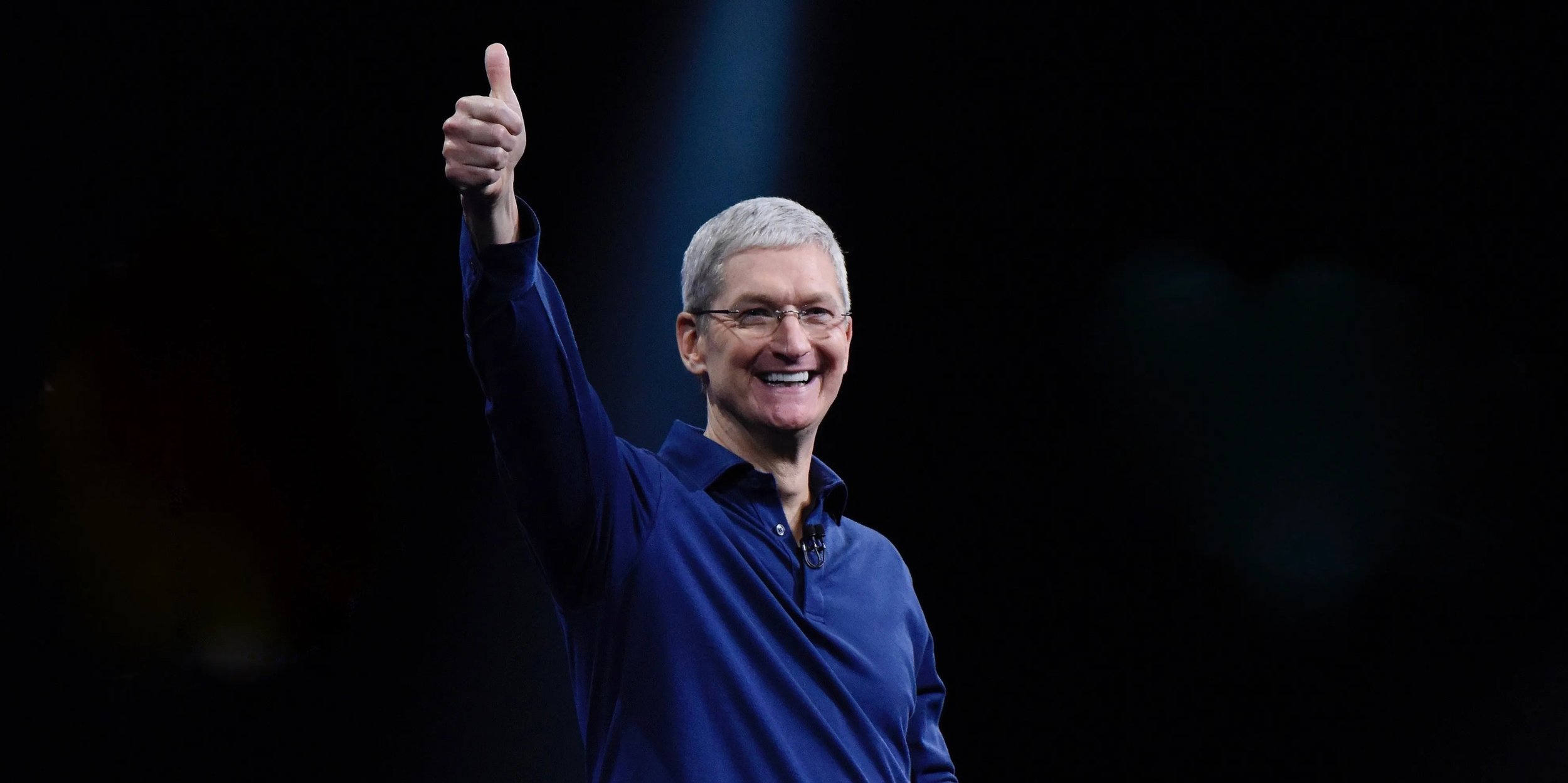WHY AR+ ?
20 Augmented Reality Statistics
You Should Know
AR Statistics: Market Overview
It’s 2025 & the future is now. Technologies are more accessible & hyped more by evangelists than Christmas.
Artificial intelligence, machine learning, blockchain, autonomous vehicles— the list of unprecedented technologies goes on and on.
The game-changing technology is
Augmented Reality
book a demo
$50B
The global Augmented Reality (AR) market size is valued at $50 billion as of 2022.
In 2022, the global Augmented Reality (AR) market size was valued at $50 billion ($31.97 billion USD).
It’s expected to reach $144 billion by 2026 while growing at a CAGR of 31.5% between the forecast period of 2023 to 2026.
(MarketsandMarkets)
"I do think that a significant portion of the population of developed countries, and eventually all countries, will have AR experiences every day, almost like eating three meals a day. It will become that much a part of you."
TIM COOK
1%
of retailers say they are using AR. Innovate with AR.
According to a report from Mobile Marketer, retailers are slowly adopting AR in the buying process. Only 1% of retailers are currently using AR or VR (Virtual Reality) in their customer buying experience. For retailers that bring in most of their sales online, AR can help customers to have a more accurate understanding of how a product is going to look and feel in their space. Being able to communicate the details about a product through AR can help customers understand what they’re buying, making it easier to meet customer expectations, which leads to higher post-purchase satisfaction.
75%
of the global population will become active AR users by 2025 (Snap Inc.)
Mobile Augmented Reality is Going to Rule Your Smartphones
Our tech evolution is defined by speed and change. All the new technologies are created to be easier, safe and faster with permanent availability to deliver real-time results. 5G revolution is one such technology and Augmented Reality reaps the most benefit of this fastest internet ever.
Until now, AR tech was used by a small portion of population because of several limitations. The computing, graphics and display technology to create high-quality AR experience was not easily accessible without Head Mounted Devices.
Now that 5G will soon be available at every doorstep, use cases of Augmented Reality will multiply by the day. Users will be able to use AR in mobile for everyday-use like shopping, business advertisements, and so much more!
9 in 10
medium-sized brands are using augmented reality to power their business (Deloitte)
The research states that 88% of midsize companies leverage AR capabilities for multiple purposes.
Effective product development, fostering collaboration, accelerated training, goal-oriented marketing, and enhanced internal communication are among the core reasons companies adopt augmented reality.
For example, Ulta. The beauty and cosmetics company integrated an AR-powered virtual try on feature and let users try products in real-time before purchasing.
This helped the brand to increase sales, decrease the return rate, and skyrocket user engagement by 700%.The number of worldwide mobile users is growing and tends to reach 7.49 billion in 2022. This means the native mobile app experience is among the core platforms for businesses to interact with their customers.
And AR adoption is no exception as brands don’t want to lose their mobile target audience. So, companies adopt augmented reality solutions and integrate them into their business apps to meet a large demand.
And this has a proven outcome: the global mobile AR revenue is projected to reach $12.8B in 2022 compared to only $4B in 2019.
73%
of people can easily understand AR when they see it.
Theoretically, it's hard to describe what augmented reality is. But in the same report on Snapchat, 73% of people can quickly identify AR when they see it. So, maybe we should show the effectiveness of AR rather than trying to explain what it is when talking about it.
"As AR evolves, it will revolutionize our lives and will become as significant of a technology shift as the web or mobile was to society, changing how we view and interact with the world around us." -Allan Cook, Deloitte Digital
Who
created Augmented Reality?
Ivan Sutherland, a computer graphics scientist in the 1960s is attributed with creating AR.
He is considered to be the inventor of Augmented Reality.
What is Augmented Reality?
Augmented Reality is how technology enhances real-world objects via visual, audio, and/or other stimuli.
It creates an immersive experience in whatever realm you use it.
97%
of Forbes’ Most Valuable Brands utilize augmented reality.
Forbes’s list of most valuable brands includes companies like Microsoft, Amazon Apple, and Google.
2 in 3
customers say they would purchase more products if they used AR (ThinkMobiles)
Multiple e-commerce, retail, healthcare, gaming, and automotive brands are adopting AR-powered technologies and rolling out new and disruptive solutions.
In turn, customers try and validate them mostly getting diverse benefits of AR compared to using traditional and old-fashioned market offerings.
Here comes a higher demand from users and increased sales for brands that motivates them to roll out new immersive experiences.
1B people
worldwide use AR.
Mobile AR opens the door.
Since Apple and Google launched their respective ARKit and ARCore platforms, tens of thousands of AR apps are being used every day by over 1 billion people. As Tim Cook said, engagements with AR will become everyday events. As people become more comfortable using AR, retailers have to innovate and keep up with how the market is changing.
67%
of advertising agencies say they are making more use of AR.
Advertisers know that AR sells.
According to Vibrant Media, AR ads are enabling brands to bring their products to life right in front of consumers. The travel, automotive, and entertainment industries are expected to see big benefits from augmented reality campaigns.
75 seconds
Advertising campaigns designed on augmented reality have a dwell time of about 75 seconds on average.
Traditional promotional campaigns on TV or radio have a dwell time of only 2.5 seconds on average.
3.5B
By 2022, there should be around 3.5 billion AR users.
(Source: Poplar)
This amounts to over 25% of the world's population. In the US alone, 83.1 million people were projected to use AR at least once in a month in 2020. Some are even using AR daily without noticing.
26%
of smartphones are ARKit- or ARCore-compatible.
With ARKit and ARCore becoming available to most smartphone owners, AR has been quickly integrated into many apps. What many brands don’t know is that most web browsers ship with WebVR and other 3D technologies.
39%
of AR retailers use AR for the consideration phase.
AR helps consumers understand a product.
AR is a great medium for showing highly detailed 3D models of your products. Compelling imagery is a must-have for selling products online. With 3D models of your products in AR, consumers can know exactly how their product will work for them, with their specific needs and space.
16%
of retailers use AR for the sales phase.
AR helps consumers make buying decisions.
After consumers have selected which products will work for them, making the choice of what product to purchase is an area that AR can significantly influence. For brands that have an in-person onboarding process for their customers, using AR and VR can compel customers with real-life, vivid imagery that drives them towards buying.
40%
higher conversion rates with AR.
Grow your conversions with AR.
Using 3D technologies in your online shopping experience can increase your conversion rates by up to 40%. Using AR can give customers the confidence to buy, increase their post-purchase satisfaction, and reduce return rates.
$6.4B
is the estimated market value for the AR gaming industry in 2021. (IMARC)
The gaming augmented reality industry is among the largest domains adopting augmented reality technologies.
Pokemon Go, Harry Potter: Wizards Unite, Zombies, Run!, The Walking Dead: Our World and Jurassic World Alive enter the list of the most popular mobile AR games.
There are two main industry growth drivers: a rising number of mobile users and a huge demand for new gaming experiences.
Augmented reality makes the gaming industry thrive as players get a never-seen-before engagement. AR helps users simply integrate virtual characters and gaming scenarios into their real life helping brands increase the average session time and boost in-game monetization.
70%
of consumers believe augmented reality technology can help them learn new personal and professional skills. (ISACA)
41%
Brands are 41% more likely to be considered if they have a branded AR experience.
65%
of AR consumers around the world and across generations use AR to have fun.
book a demo
70%
of AR users are between 16 and 34 years old.
Recent data shows that 70% of AR users are aged 16 to 34 years old.
The breakdown is 35% for those between 16 and 24 and 35% for those between 25 and 34.
Furthermore, 27% of those between 35 and 44 use Augmented Reality technology, 11% of users are between 45 and 54, and 3% are between 55 and 64 years old.
(EnterpriseAppsToday)
“changing the way we interact with the World”
References:
AngelList (2021). Augmented Reality Startups. Retrieved from AngelList
Barack, L. (2017). You’re likely using AR, even if you don’t know it. Retrieved from GearBrain
Inception (n.d.). https://inceptionxr.com/augmented-reality/. Retrieved from Inception
Bondarenko, S. (2018). THE IMPACT OF AUGMENTED REALITY ON BUSINESS. Retrieved from Skywell Software
Cision (2020). Global AR Gaming Market Report 2020 – Mobile AR Gaming Market Projected to Grow at a 41.9% CAGR to Reach $21.7 by 2027. Retrieved from Cision
Deloitte (2016, August). Technology in the mid-market. Retrieved from Deloitte
Digi Capital (2017). After Mixed Year, Mobile AR to Drive $108 Billion VR/AR Market by 2021. Retrieved from Digi Capital
Ericsson (2019). Is augmented reality (AR) the next level of gaming?. Retrieved from Ericsson
Go-Globe (2018). The State of Mobile Gaming Industry – Statistics and Trends. Retrieved from Go-Globe
IDC (2019). Worldwide Spending on Augmented and Virtual Reality Expected to Reach $18.8 Billion in 2020, According to IDC. Retrieved from IDC
IDC (2020). Distribution of augmented reality (AR) headset shipments worldwide from 3rd quarter 2018 to 1st quarter 2020, by category. Retrieved from Statista
IDC (2020). Worldwide Spending on Augmented and Virtual Reality Forecast to Deliver Strong Growth Through 2024, According to a New IDC Spending Guide. Retrieved from IDC
IDC (2020). AR and VR Headsets Will See Shipments Decline in the Near Term Due to COVID-19, But Long-term Outlook Is Positive, According to IDC. Retrieved from IDC
ISACA (2017). Virtual Reality and Augmented Reality. Retrieved from ISACA
Makarov, A. (2021, February 1). 10 AUGMENTED REALITY TRENDS IN 2021: THE FUTURE IS HERE. Retrieved from MobiDev
Moreno, D. (2017). Facebook, Apple Pushing AR, But Many Americans Don’t Know What It Is. Retrieved from IBTimes
Mudrick, C. (2019). The New Reality for Mobile Gaming: The VR/AR Opportunity. Retrieved from Newzoo
New Gen Apps (2018). 6 VR & AR Statistics: Shaping the Future of Augmented Reality with Data. Retrieved from New Gen Apps
Pagan Research (n.d.). 30 Best Augmented reality (AR)/Virtual reality (VR) Startups Globally. Retrieved from Pagan Research
Perkins Coie (2019). 2019 AUGMENTED AND VIRTUAL REALITY SURVEY REPORT. Retrieved from Perkins Coie
Perkins Coie (2020). 2020 AUGMENTED AND VIRTUAL REALITY SURVEY REPORT. Retrieved from Perkins Coie
Petrock, V. (YEAR). Virtual and Augmented Reality Users 2019. Retrieved from eMarketer
SensorTower (2018). ARKit-only Apps Surpass 13 Million Downloads in First Six Months, Nearly Half from Games. Retrieved from SensorTower
Shotwell, L. (2020). 7 POST-PANDEMIC TECHNOLOGY TRENDS TO RESHAPE THE FUTURE OF RETAIL INDUSTRY. Retrieved from MobiDev
SuperData Rsearch (n.d.). 3 Reasons Why Mobile AR Developers Should Focus on Ads and Not In-App Purchases. Retrieved from SuperData Rsearch
Sydow, L. (2019). The State of Mobile Games in 2019 and Beyond. Retrieved from App Annie
Vibrant (2017). New Virtual Reality Ads Give 360 Degree View From Within Editorial. Retrieved from Vibrant
Vidger, A. (2019, July 29). Augmented Reality Market Value to Exceed $30 Billion by 2023, Says New Report by Greenlight Insights. Retrieved from Greenlight Insights
Windstream (2018). 2018 Digital Commerce Survey. Retrieved from Windstream
ready to work with us?









